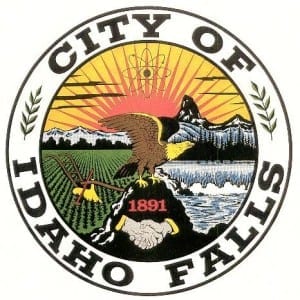Nuclear Reactors 746 - Idaho Falls Considering Purchase Of Electricity From Propose Nuclear Power Plant
Idaho Falls (IF) is working on increasing the percentage of electrical generating capacity that it owns. This has been done three times before in the past thirty years. Their last acquisition was three megawatts of wind power at about thirty percent capacity factor. (The net capacity factor is the unitless ratio of an actual electrical energy output over a given period of time to the maximum possible electrical energy output over that period.) It provides less than one percent of their electricity. They have tried without success to add hydro and coal-generation capacity to their portfolio.
The new proposal expresses the intent to buy ten megawatts from a proposed nuclear power plant to be built on the western edge of the site of the Idaho National Laboratory near IF. At a ninety to ninety-five percent capacity factor, it could provide as much as ten percent of the electricity for IF.
A two-phase study plan has been suggested that might have an impact of the exact share of generating capacity sought. The first phase would convene a diverse group of consumers of electricity to assess the project. The second phase would be an independent assessment by a professional.
The supporters of the new proposal say that IF should own more of what it consumes. The electricity demands in IF have been growing. They will need more generating capacity just to keep providing the current quarter to a third of the electricity they get from four dams and their stake in the windfarm. The proposed nuclear power plant would be operational by 2027. The Bonneville Power Administration (BPA) IF contract must be renewed in 2028. Currently IF buys sixty percent of their electricity from BPA. The proposed technology should be safer and more cost effective than current nuclear power plants.
The plans to deal with the regulatory process appear to be adequate. It is expected that the Nuclear Regulatory Commission will certify the plant design next year. If it does, it might suggest that IF should increase the share they are seeking. Government nuclear facilities depend on the government to handle spent nuclear fuel and cleanup of the sites when it is decommissioned. Users of the IF grid will only have to pay for the electricity that they consume. There are some issues that need to be resolved if a share increase is desired.
Although the design of the nuclear power plant is sound, this particular design has not been built before so there is a risk of cost overruns. IF consumers are protected against any cost increase before the final decision to proceed or cancel the project in 2023. Because IF is only talking about buying a ten percent stake in the new power plant, any cost increase for the power plant should result in only moderate increases in IF electricity rates.
A second issue that needs to be resolved for the project to proceed is the possibility of a court battle over the Idaho-Department of Energy Settlement Agreement. This Agreement has to do with the transport of government nuclear waste to and storage at the INL. It is not clear exactly how the Agreement could be applied to spent nuclear fuel generated inside Idaho by a private firm.
A third risk to the project has to do with acquiring the necessary water rights to operate the plant. IF said in August that the project was inclined to use “dry” cooling towers instead of a “wet” system in order to reduce water use.
If these three risks can be properly assessed and dealt with, the desire of IF to buy energy from the new nuclear power plant may be satisfied.
